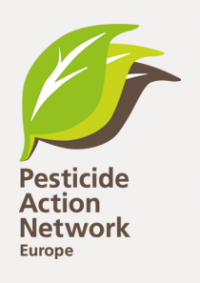Briefings
A PAN Europe briefing on the assessment of safeners and synergists in view of the European Commission’s draft Regulation
“Plant protection products – data requirements and gradual review of safeners and synergists.”
Summary : According to EU Regulation on Pesticides (Reg. (EC) 1107/2009), pesticides placed on the EU market should have no harmful effects to human and animal health and no unacceptable effects to the environment (Art.1 & 4). This concerns pesticide products and all their ingredients including active substances, safeners, synergists and co-formulants.
PAN Europe contribution to the EC public consultation on the assessment of safeners and synergists
The Pesticide Network Europe (PAN Europe) welcomes the European Commission’s long overdue (9 years) draft Regulation defining data requirements for the approval of safeners and synergists and establishing a work programme for the gradual review of safeners and synergists in the EU market. This is crucial to eliminate the discrepancies in methodologies and level of protection that exist between Member States when assessing safeners and synergists.
Beneath the orange fields: Impact of Glyphosate on soil organisms
Glyphosate is the active substance of the most used pesticide (herbicide) products globally: glyphosate-based herbicides (GBHs). They are used widely to kill plants, leading to their widespread presence in our ecosystems, surroundings and bodies.
Stop the export of EU-banned and hazardous pesticides
The Pesticide Action Network (PAN) Europe supports the European Commission's intention to present legislative measures aimed at prohibiting the production and export of chemicals that have been banned in the European Union due to their hazardous properties. This is in line with its commitment under the European Green Deal and specifically the Chemical Strategy for Sustainability, towards a toxic free environment, where Europe shows global leadership in the protection from hazardous chemicals and promotion of sustainable practices.
Joint statement on the publication of the EC proposal for a Directive on Soil Monitoring and Resilience
We, the signatories of this statement, welcome the European Commission’s proposal for a Directive on Soil Monitoring and Resilience (Soil Monitoring Law). Unfortunately, the proposal in its current form will not enable the achievement of healthy soils in the EU. The change of the name of the legislation, which was originally planned to be called ‘Soil Health Law’, is symbolic of its lack of ambition and its shift away from soil health towards largely soil monitoring.
Roadmap and priorities for commission and member states
As required by Regulation (EC) 1107/2009:
1. Apply the precautionary principle and ensure a high level of protection of human health, animal health and the environment in line with the provisions of the EU law. Member States and the European Commission shall also take preventative measures, when the first evidence of potential harm appears. More specifically:
2. Strictly apply the hazard-based approach and the approval criteria, including by:
Gaps in EU pesticide authorisation
Europe could and should be much healthier and biodiverse. Four years ago the PEST Committee in the European Parliament concluded after 9 months of investigations, hearings, missions and commissioning of studies that the current system of pesticides authorisation is failing to achieve its purpose, highlighting the need for urgent change.
Glyphosate based herbicides and their impact on bees' health
Many people assume that herbicides, since they are designed to kill plants, are not toxic for bees. This, however, is far from the truth. In this summary we provide scientific findings that reveal that glyphosate-based herbicides (GBH) are toxic to bees in many ways. Bees are exposed to this chemical either by direct contact or by ingestion via food and contaminated water.
Our research shows that the herbicide:
Joint NGO analysis of the European Commission’s proposal for revised list of priority substances for surface and groundwater
On 26 October 2022, the European Commission presented its proposal for a Directive amending the Water Framework Directive (WFD 2000/60/EC), the Groundwater Directive (GWD 2006/118/EC) and the Environmental Quality Standards Directive (EQSD 2008/105/EC). The initiative updates the lists of priority substances for surface and groundwater and their associated legal threshold values that are used to assess chemical status under the WFD.
Comparative Assessment and Substitution
Under Regulation (EU) 1107/2009, active substances that are the most hazardous to human health or the environment are approved as candidates for substitution. In addition to being approved for a maximum period of seven years, these substances can only be authorised in pesticide products by Member States when a comparative assessment has shown that they cannot be substituted with safer alternatives. Comparative assessment, in line with Article 50, is a legal requirement for all Member States since 1 August 2015.
